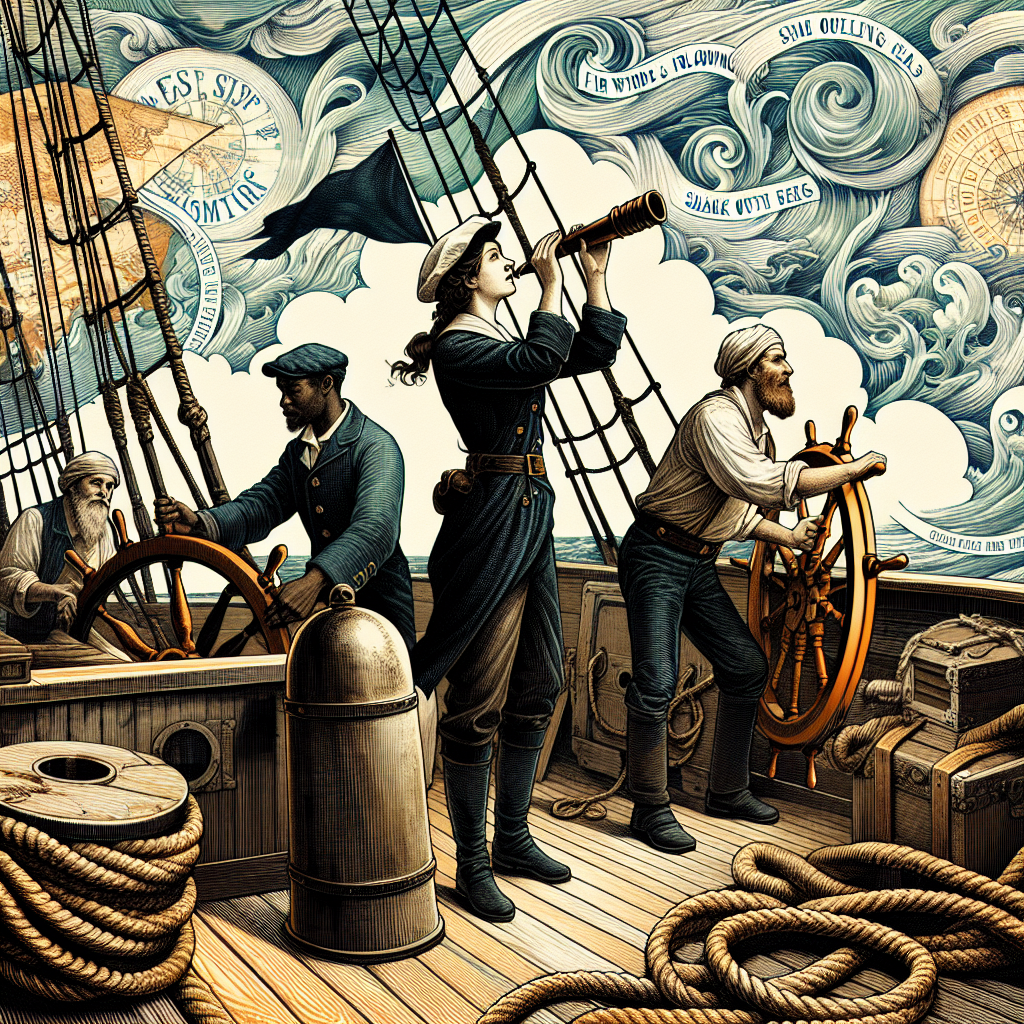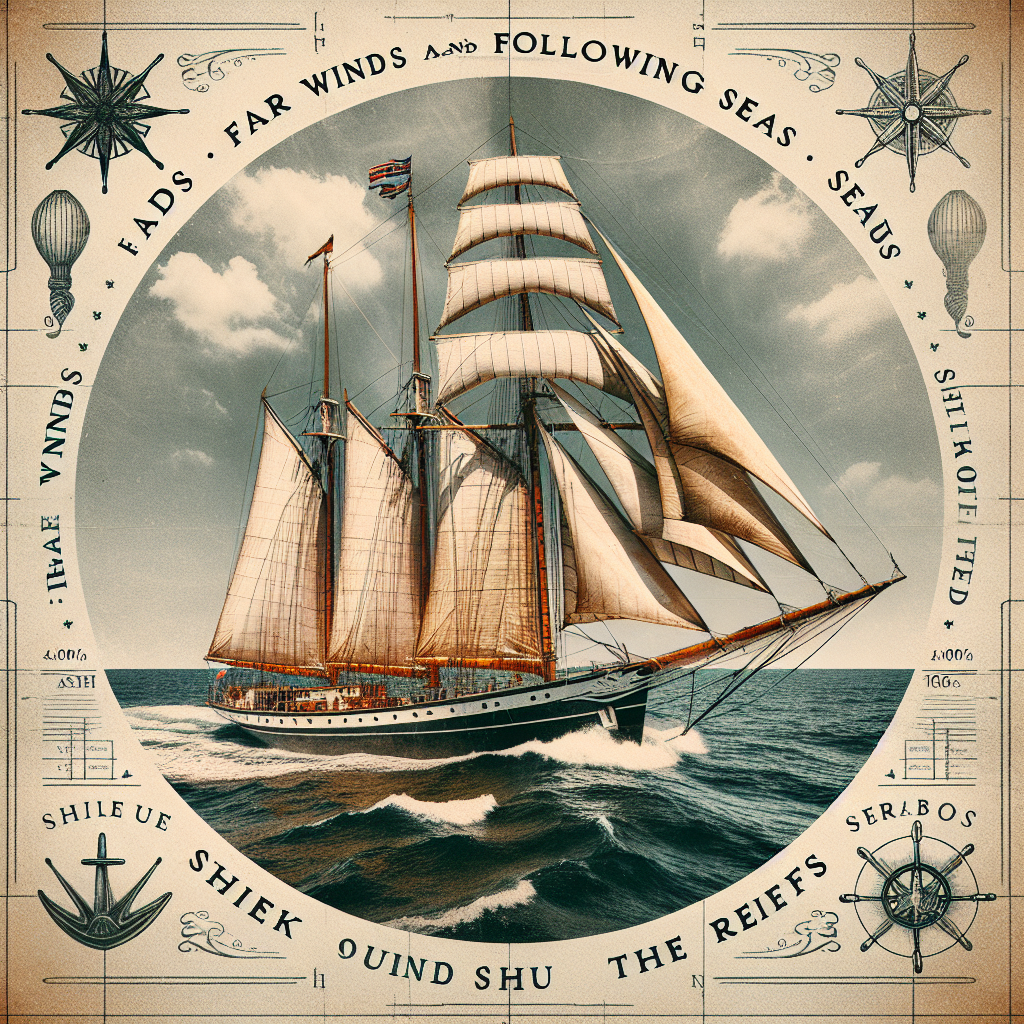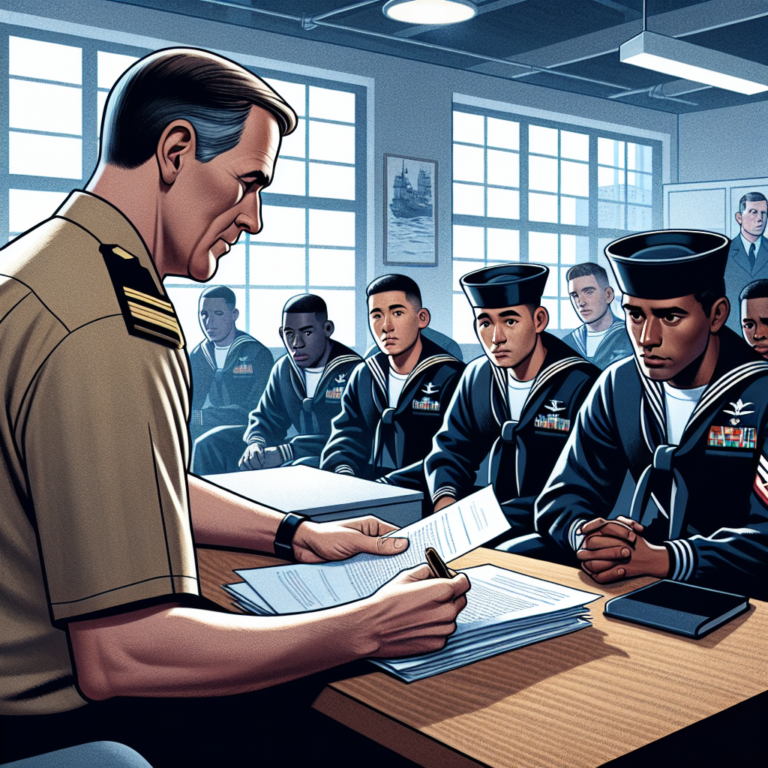What Do Sailors Say When They Set Sail
Picture this: you’re standing on the dock, watching a majestic sailboat glide through the water, its sails billowing in the wind. As you witness the sailors expertly maneuvering, a question pops into your mind: what do they say when they set sail? Are there secret, time-honored phrases whispered under their breaths, or do they simply shout “anchors away!”? In this article, we will uncover the intriguing world of sailor lingo and discover the phrases that echo across the open sea when sailors embark on their nautical adventures.
Common Phrases Used by Sailors
Traditional Nautical Expressions
When it comes to sailing, there are some timeless phrases that sailors have been using for centuries. These expressions have become ingrained in the nautical culture and are still commonly heard on boats today. For example, one of the most well-known phrases is “avast ye,” which is typically used as a command to stop or cease an action. It harks back to the pirate era and adds a touch of flair to the nautical vocabulary.
Another traditional expression you might hear is “anchors aweigh.” This phrase is used to indicate that the anchor is being lifted from the seabed, signaling the start of a voyage. It’s a symbolic way of saying “we’re leaving” and evokes a sense of excitement and adventure.
Modern Sailing Jargon
In addition to the traditional expressions, modern sailing has also given rise to a whole new set of jargon. Some of these phrases have emerged from the racing and competitive side of sailing, while others have originated from the technological advancements in the field. For instance, you might hear sailors talking about “trimming the sails,” which refers to adjusting the sails to optimize their performance in relation to the wind.
Another phrase you might come across is “reefing the sails.” This means reducing the size of the sails to make them more manageable in stormy conditions. It’s an essential safety measure that allows sailors to maintain control over their vessel when facing challenging weather conditions.
Setting Sail
Preparation and Safety Checks
Before setting sail, it’s crucial to ensure that everything is in order to guarantee a safe and smooth journey. Sailors have developed a set of phrases for the various tasks and checks that need to be completed. For example, “batten down the hatches” is a phrase used to secure any openings on the deck to prevent water from entering during rough seas.
Additionally, sailors are often heard saying “all hands on deck” when they need everyone’s assistance. This phrase emphasizes the importance of teamwork and cooperation, as every crew member’s contribution is vital for a successful voyage.
Casting Off Phrases
Once all the safety checks have been completed, it’s time to cast off and embark on the sailing adventure. Sailors have distinctive phrases for this moment. “Cast off” is a phrase commonly used to indicate the act of releasing the mooring lines that keep the vessel tied to the dock. It’s a symbolic moment that marks the beginning of a new journey and the excitement of venturing into the open water.
Another phrase you might hear is “let go the lines.” This phrase instructs the crew to release the lines, allowing the boat to move freely. It’s an exhilarating moment that signifies the start of the voyage and the anticipation of what lies ahead.

Superstition and Sea Lore
Bad Luck Omens
Sailors, being a superstitious bunch, have long believed in certain omens that bring bad luck. These beliefs have been passed down through the generations and are still prevalent in many maritime traditions. For instance, sailors view black cats as a sign of bad luck, so having one on board is highly discouraged.
Another bad luck omen is the sighting of a shark swimming alongside the boat. It’s believed that sharks have the power to bring misfortune and even disaster to the voyage. Sailors often interpret such sightings as a warning to change course or take preventive measures to counteract the perceived bad luck.
Good Luck Charms and Rituals
On the flip side, sailors have also developed an array of rituals and good luck charms to ward off misfortune and ensure a safe passage. One popular good luck charm is a horseshoe, which is traditionally hung in an upright position near the bow of the boat. It is believed to bring good luck and protect the vessel from evil spirits.
Furthermore, there is a long-standing tradition of having a coin placed under the mast when the boat is built or outfitted. The coin is said to bring good fortune to the vessel and its crew.
Traditional Shouts and Chants
Work Songs and Sea Shanties
Sailing can be physically demanding, and sailors have historically used work songs and sea shanties to synchronize their efforts and maintain morale during labor-intensive tasks. Work songs like “Shenandoah” and shanties like “Drunken Sailor” have become iconic in the sailing culture.
These songs often have a call-and-response structure, with one crew member leading the chant while others join in with a chorus or a specific response. The rhythmic nature of these songs helps sailors coordinate their actions, making arduous tasks like raising the anchor or hoisting the sails more manageable.
Battle Cries
In the naval history of warfare, sailors have used battle cries to bolster their courage and intimidate their opponents. These cries have evolved over time, adapting to the changing face of naval combat. “England expects that every man will do his duty” is one such battle cry famously used by Admiral Lord Nelson during the Battle of Trafalgar in 1805.
While battle cries may not have as prominent a role in modern naval operations, they still hold a place in ceremonial events and serve as a reminder of the bravery and dedication of those who have come before.

Essential Navigational Commands
Directional Commands
Clear and concise communication is vital in sailing, especially when it comes to navigating a vessel. Sailors use specific commands to convey directions and ensure the smooth operation of the boat. For example, “helm to starboard” instructs the person manning the helm to turn the wheel or tiller towards the right side of the boat.
Similarly, “hard-a-lee” is a command given when a rapid turn is needed. It instructs the helmsman to turn the helm as far as possible in the opposite direction of the turn to execute a quick and sharp maneuver.
Speed and Sailing Conditions
Another crucial aspect of sailing involves communicating the desired speed and responding to prevailing wind and sea conditions. Sailors use phrases like “full speed ahead” when they want the boat to travel at maximum speed. Conversely, “slow ahead” or “dead slow” is used when a more controlled and cautious pace is required.
In terms of sailing conditions, the command “luff” indicates the need to steer the boat towards the direction from which the wind is coming. This maneuver helps reduce the boat’s speed and optimize its performance against unfavorable wind conditions.
Crew Communication
Intra-ship Communication
Clear and effective communication within the crew is essential for the safe and efficient operation of a sailing vessel. Sailors have developed specific communication protocols to ensure that messages are transmitted accurately and understood by everyone on board. For instance, the phrase “man overboard” is a crucial alert that demands immediate action from the crew to initiate a rescue operation.
Furthermore, there are specific commands used during sailing maneuvers, such as “prepare to tack” or “prepare to come about,” which indicate that the crew should get ready to execute a turn in the opposite direction. By using precise phrases, sailors can convey important information with speed and clarity.
Inter-ship Communication
In addition to intra-ship communication, sailors also need effective means of communicating with other vessels. This is especially important in situations where coordination between multiple boats is required, such as during races or when navigating busy waterways. Many sailors use radio communication to ensure clear and efficient exchanges of information.
By adhering to internationally recognized communication protocols, sailors can send and receive messages in a standardized format, minimizing the risk of miscommunication and promoting safe interactions between vessels.

Weather and Sea Condition Terms
Beautiful Weather Expressions
Sailors are known for their deep appreciation of nature, and clear and beautiful weather holds a special place in their hearts. They have developed phrases to express their admiration for favorable conditions. “Fair winds and following seas” is a popular saying that captures the essence of perfect sailing weather, with the wind coming from a favorable direction and gentle seas pushing the boat forward.
Another phrase often heard is “sunny skies and a steady breeze.” This description encapsulates the ideal weather conditions for a leisurely sail, with the sun shining, a pleasant wind, and calm seas.
Stormy Weather Phrases
While sailors might cherish beautiful weather, they also understand the challenges posed by stormy conditions. They have a whole set of phrases to refer to unfavorable weather patterns. For example, “rough seas and a tempestuous sky” paints a vivid picture of turbulent waters and ominous dark clouds, indicating the presence of a storm.
Similarly, “gale-force winds” is a term used to describe extremely strong winds, typically between 32 and 63 knots on the Beaufort scale. These phrases serve as reminders of the power of nature and the need for caution when facing adverse weather at sea.
Leaving Port or Harbour
Departure Blessings and Farewells
Leaving port or harbor is a significant moment for sailors, and they have various traditions to mark this occasion. One such tradition is the blessing of the boat and its crew before setting sail. Sailors may recite prayers or have a religious figure conduct a ceremony to ensure a safe journey and seek divine protection.
Additionally, farewells play an important role as sailors bid adieu to their loved ones and the comforts of land. Phrases like “until we meet again” or “may fair winds guide your path” are often exchanged, symbolizing the hope for a joyful reunion and a favorable voyage.
Leaving Port Jargon
In addition to blessings and farewells, there are specific phrases commonly used when leaving port or harbor. “Underway” is a phrase that signifies the boat is in motion and no longer moored. It captures the excitement and anticipation of embarking on a new adventure.
Another phrase you might hear is “anchors aweigh,” which we mentioned earlier. When the anchor is lifted, this phrase confirms that the vessel is ready to depart and commence its journey.

Courage and Bravery at Sea
Motivational Sayings and Toasts
Sailing can be a challenging and unpredictable endeavor, requiring courage and bravery from the crew. Sailors often exchange motivational sayings and offer toasts to encourage each other and boost morale during difficult times. Phrases like “smooth seas never made a skilled sailor” remind everyone that overcoming challenges is part of the sailing experience and the path to personal growth.
Toasts are also a way for sailors to honor and acknowledge the bravery and determination of their fellow crew members. Whether it is a simple “to the courageous souls navigating these mighty waters” or a more elaborate tribute, these expressions of admiration and support foster a sense of camaraderie and unity.
Facing Peril Phrases
When facing perilous situations at sea, sailors have specific phrases that exemplify their determination and resilience. “Hold fast” is a common expression used to encourage everyone to stay strong and not let fear or panic overcome them. It serves as a reminder to remain steadfast and focused on the task at hand, even in the face of danger.
In times of crisis, sailors also rely on the phrase “brace for impact” to prepare for an imminent collision or impact. This command ensures that everyone onboard is ready to face the situation head-on and take the necessary precautions to minimize harm.
International Maritime Signal Flags
Signaling Departure and Intentions
To communicate visually between vessels, sailors rely on international maritime signal flags. These flags, each representing a different letter or meaning, are used to convey various messages, including departure and intentions. For instance, the signal flag “A” indicates that a vessel is preparing to put to sea, signaling its departure.
Furthermore, the flag “B” is often hoisted to indicate that there is a diver in the water nearby, alerting other vessels to exercise caution and maintain a safe distance. By using these flags correctly and understanding their meanings, sailors can effectively communicate vital information without the need for verbal exchanges.
Emergency Flags and Signals
In times of emergency, sailors rely on specific flags and signals to indicate distress and seek assistance. The distress signal consists of three square flags, arranged in a diagonal pattern, forming an upside-down “V.” This universally recognized symbol alerts others to the presence of a vessel in distress and the need for immediate help.
Additionally, sailors use flares and distress signals to attract attention when in need of assistance. These emergency flags and signals serve as a lifeline, ensuring that sailors can alert others to their dire situation and receive the aid they require.
In conclusion, the language and phrases used by sailors carry a rich history, superstition, and practicality. From traditional nautical expressions to modern jargon, sailors have developed a comprehensive vocabulary that encompasses navigation, communication, weather conditions, and even courage at sea. These phrases not only serve as a means of effective communication but also reflect the deep-rooted traditions and culture of sailing. So the next time you find yourself on a sailing adventure, listen closely to the phrases and immerse yourself in the captivating language of the sea.






